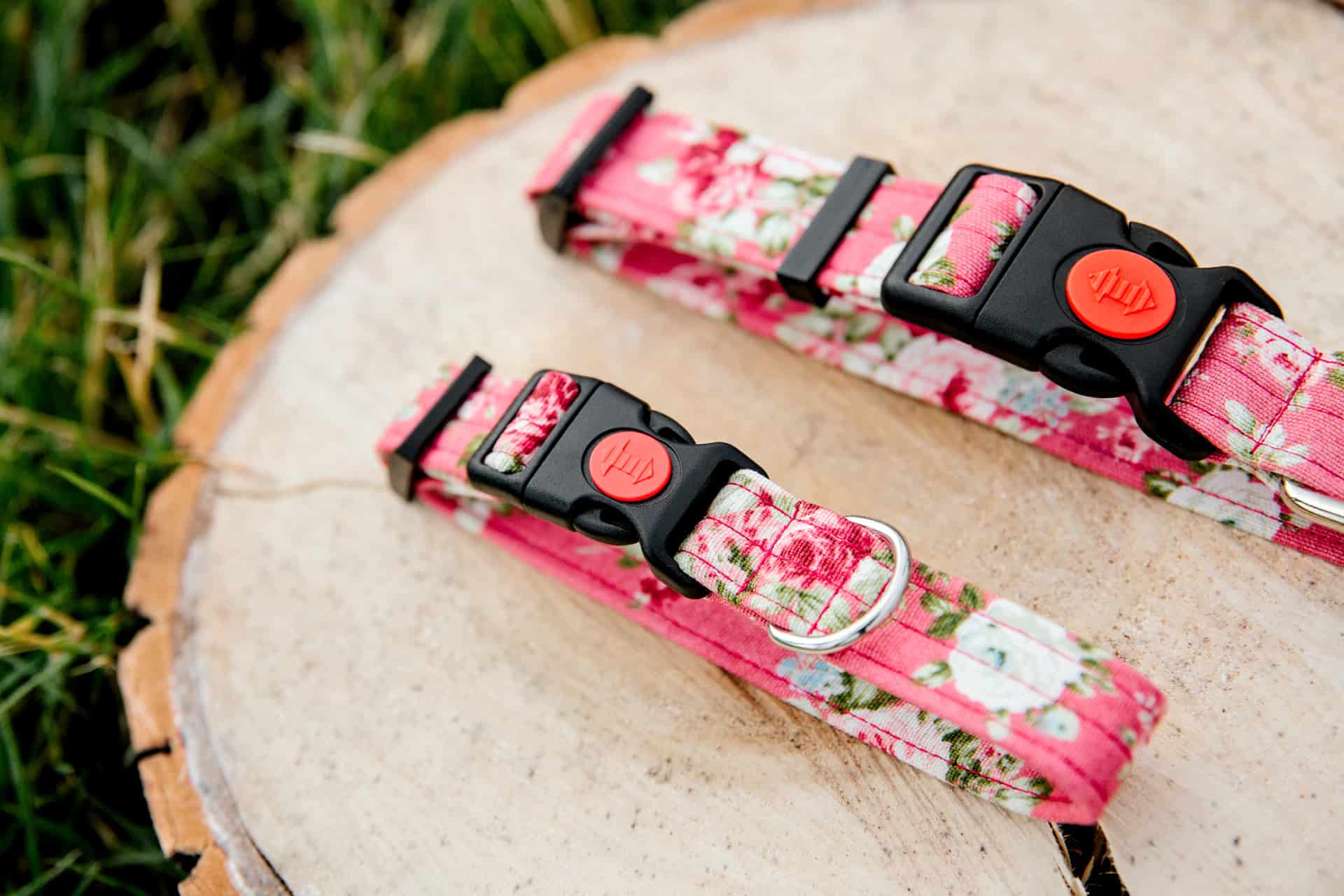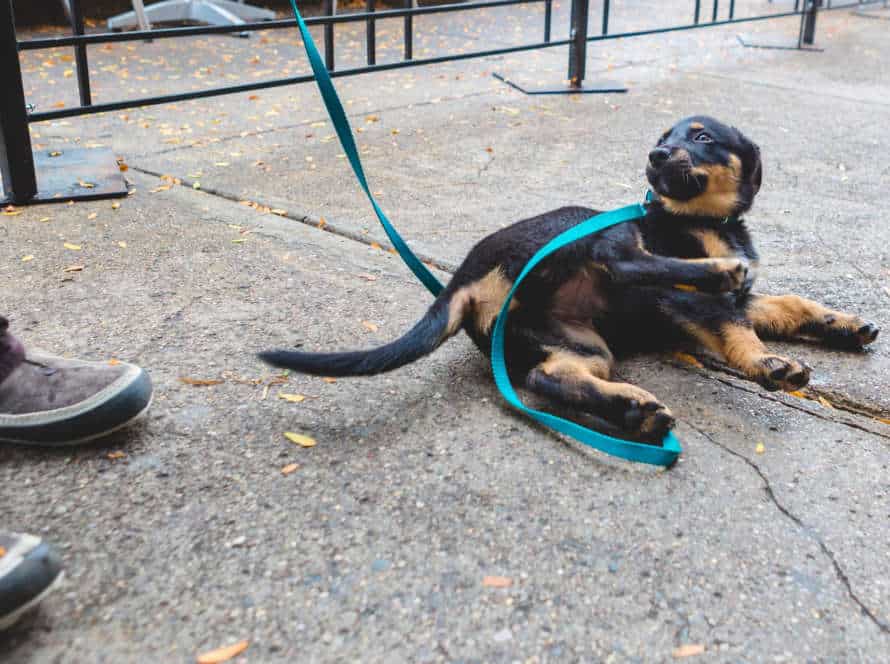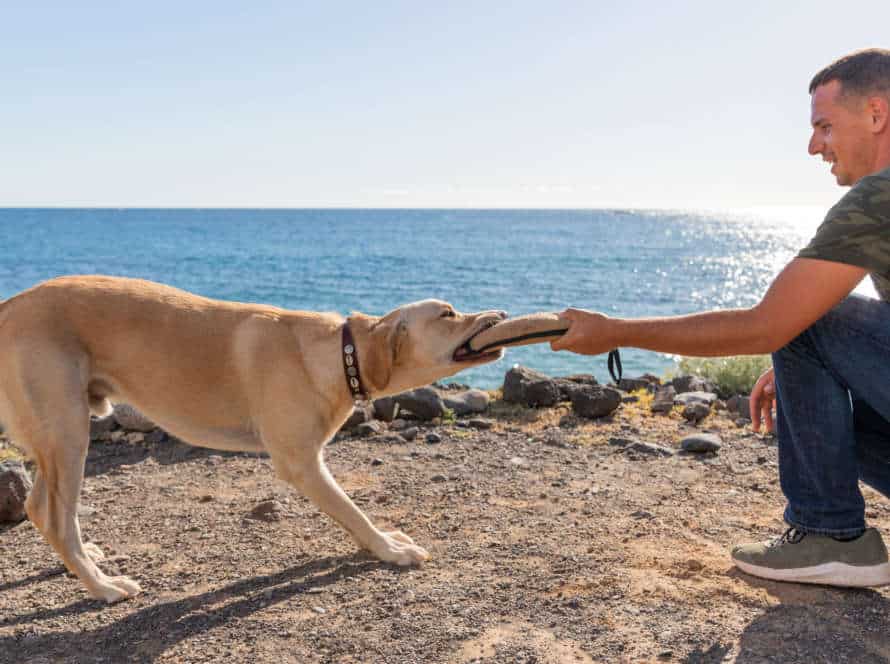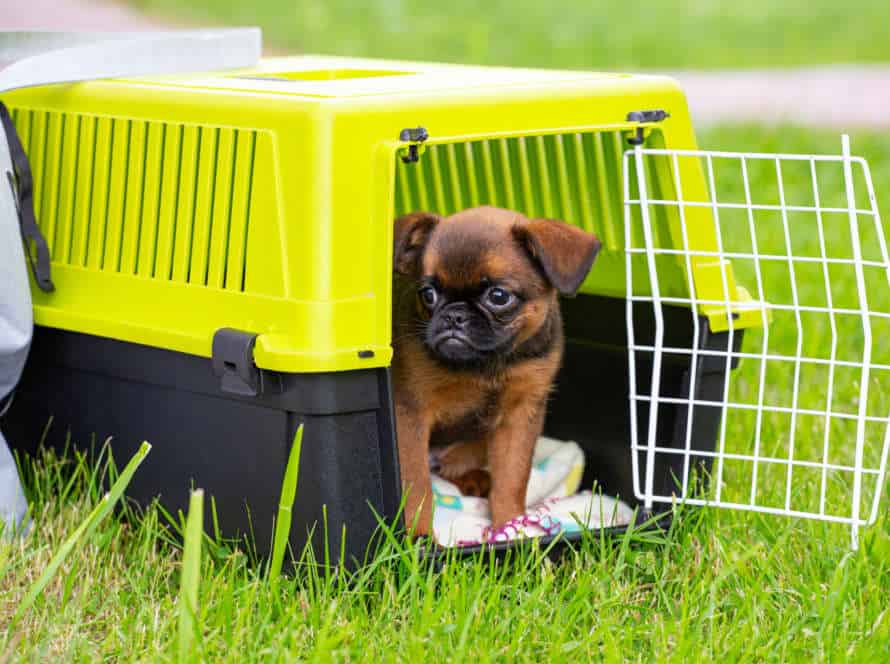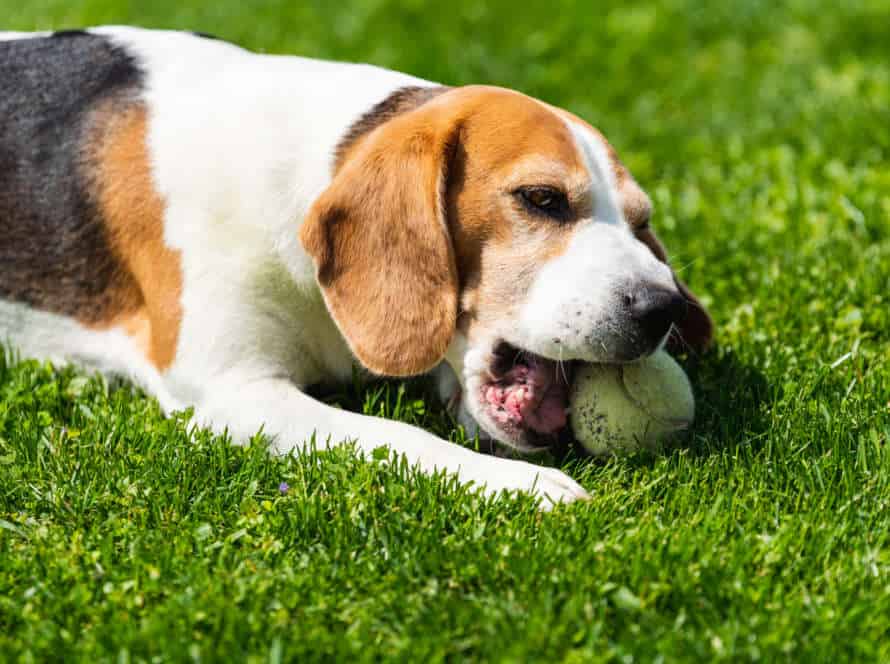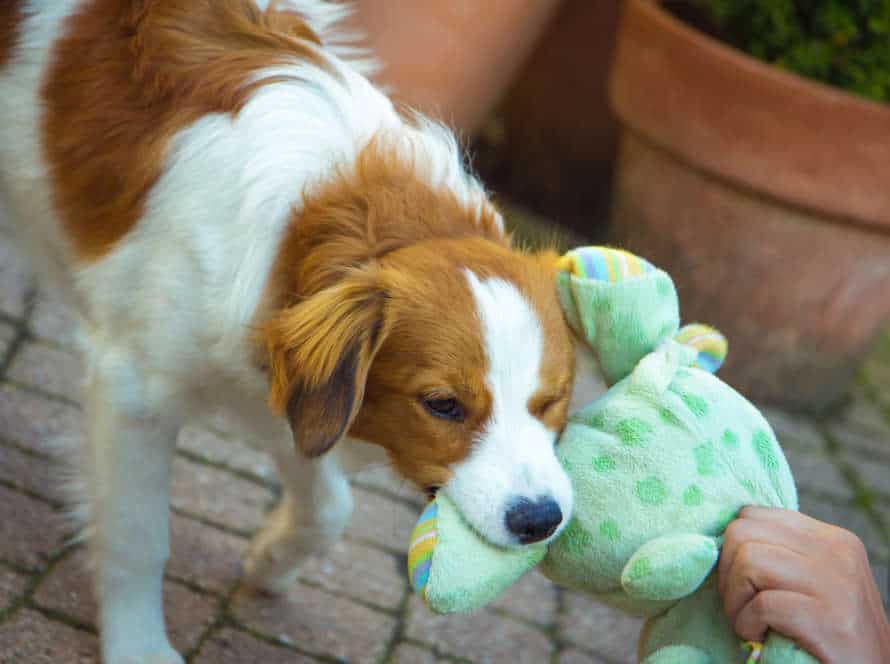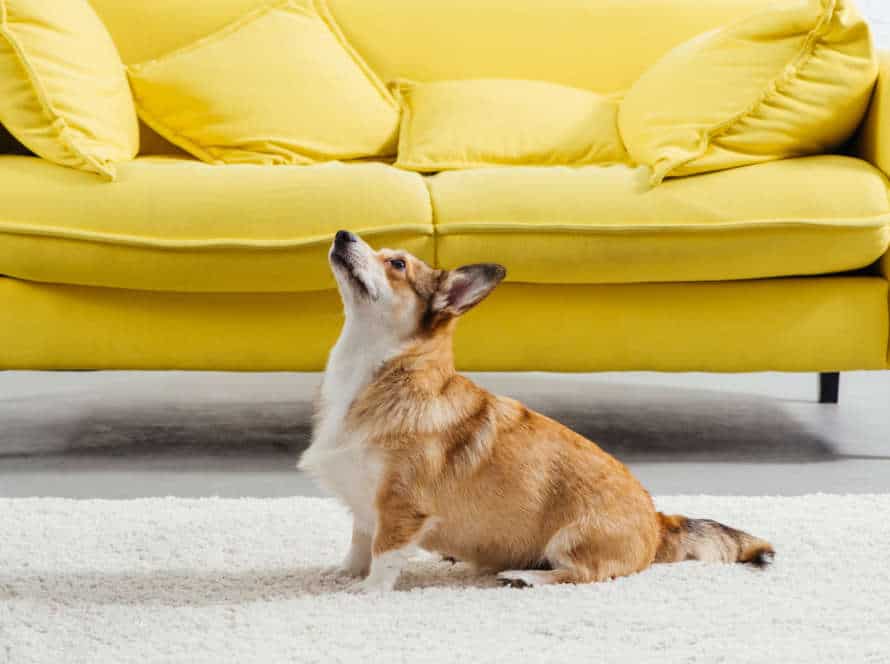The Role of Equipment in Addressing Leash Reactivity
Equipment can be crucial when dealing with leash reactivity in your pup. A front-clip harness and head halter can help you control your dog’s movements and guide their attention away from triggers.
The front-clip harness shifts the pressure of the leash from the neck and head to the chest, reducing pulling and lunging. The head halter, such as a Gentle Leader or Halti, attaches to the dog’s nose and stops pulling by redirecting their head and slowing them down.
Though equipment is helpful, it cannot substitute for training and behaviour modification. Proper training and positive reinforcement are essential for long-term success in addressing leash reactivity.
Understanding Leash Reactivity
Leash reactivity is frequent in pups. This can make walks a hassle for both you and your pup. Extra training and the proper equipment can solve this problem. Knowing what leash reactivity is and how the right equipment can help, is the key to having pleasant walks with your doggo.
What is Leash Reactivity
Leash reactivity is a common issue in dogs. It means they overreact to people, animals, and other things while on a leash. This can lead to aggressive or anxious behavior.
Here’s what to know:
- Cause– Fear, anxiety, lack of socialization, past trauma, or a mix of these.
- Equipment– Specific harnesses and collars can help. Training and behavior modification are key.
- What to use– Trainers may suggest no-pull harnesses, head halters, or traditional collars.
- Behavior modification– Positive reinforcement, desensitization, counter-conditioning techniques address the cause.
- Remember– Equipment helps manage leash reactivity, but it’s not a long-term solution. Seek a professional trainer to develop an effective training plan.
Why do Dogs Exhibit Leash Reactivity
Many dogs show leash reactivity. That’s when a pup gets aggressive or excited when held on a leash. This can be caused by many reasons, like the dog wanting to protect their territory, lack of socialization or bad experiences on a leash.
Equipment used can make a difference. A choke or prong collar can worsen the problem, by causing pain or discomfort. A well-fitted harness or head collar can give better control and reduce stress on the pup.
Training and positive reinforcement can help too. Rewards like treats or praise can make the experience of being on a leash more enjoyable.
Consequences of Leash Reactivity
Leash reactivity in dogs happens when they become overly reactive or aggressive on a leash. This can have bad results for both the pup and their owner. Such results could include:
- Stress for both owner and dog, making walks unpleasant
- Injury to the owner or another dog or person, mainly if the reactive pup is large or strong
- Fear and anxiety created in the reactive dog
- Risk of the pet being put down, if the reactivity remains untreated
It’s critical to address leash reactivity as soon as possible. Use the right equipment, such as a no-pull harness or head collar. With positive reinforcement training, leash reactivity can be controlled and even eliminated in time.
Types of Equipment to Address Leash Reactivity
Leash reactivity can be tricky to tackle. The right equipment, however, can help. It all depends on the pup and the owner’s goals. Here’s a peek at the different types of equipment and how they can be used to address leash reactivity.
Harnesses
Harnesses are great for helping with leash reactivity in dogs. There are many types you can choose from. The right kind can stop your dog from pulling and make walking more enjoyable.
Here’s some types to consider:
- Front-clip harness: Attaches to the front of the chest. Best for preventing and redirecting a reactive dog.
- Back-clip harness: Attaches to the back. Best for well-trained dogs that don’t pull.
- Head halter: Goes on the head for greater control. Also prevents pulling and redirecting a reactive dog.
- No-pull harness: Designed to stop pulling. Comes with front leash attachment for better control.
Be sure to get a harness that fits your dog correctly. Otherwise, it might cause discomfort or even harm. Ask a professional dog trainer for help.
Pro Tip- Don’t use collars for reactive dogs, as it can hurt the neck.
Front-clip Harnesses
Front-clip harnesses are a popular choice for addressing leash reactivity in dogs. The leash attaches to a ring at the front of their chest, giving the handler more control.
Benefits of using this type of harness include:
- Reducing pulling
- Encouraging good body language
- Providing distraction opportunities
Pro tip: Combine the harness with positive reinforcement training for best results!
Back-clip Harnesses
A back-clip harness is a type of equipment to help with leash reactivity in dogs. It has the leash attachment on the back, not on the collar or chest. Here are the benefits:
- It evenly spreads pressure across the dog’s body, reducing pulling and tension.
- Gives the owner greater control over movements, discouraging jumping and other unwanted behaviors.
- Reduces strain on the dog’s neck and spine, preventing injury or discomfort.
- Can be used in conjunction with a leash-halter and other training tools.
However, equipment alone won’t solve the issue. Training and behavior modification techniques are essential too, to address the root cause.
Head-Halters or No-Pull Harnesses
Head-halters and no-pull harnesses are two types of equipment that can help with leash reactivity in dogs.
Head-halters fit around the muzzle and head. They work by guiding the head and redirecting the attention away from triggers. Dogs should be introduced slowly and positively to head-halters.
No-pull harnesses redirect the pulling force to the chest or shoulders and discourage pulling. It is important to choose the correct size of the harness.
Equipment can help manage leash reactivity, but it is essential to work with a professional trainer to address underlying issues. With training and management, dogs can learn to walk on a leash without displaying reactive behaviors.
Leashes
Leashes are necessary to control leash reactivity in dogs. Picking the right type of leash and equipment is essential to manage this problem efficiently.
Here are some types:
- Standard Leash: Easy to use, these are great for dogs with no severe leash reactivity.
- Retractable Leash: Can give dogs more space to explore, but may worsen leash reactivity.
- Martingale Collar: Perfect for dogs that often slip out of regular collars but not tight enough to choke.
- Head Halter: These stop dogs from pulling on the leash, controlling their head instead of body.
- Harnesses: Front-clip and back-clip harnesses distribute pressure evenly and prevent choking.
When selecting the correct equipment, take into account your dog’s size, temperament, and behavior on the leash. Also, consult a professional trainer or behaviorist before using any equipment on your dog.
Pro Tip: A great way to handle leash reactivity is to teach your dog to focus on you and follow orders.
Standard Leashes
Standard leashes are excellent for addressing leash reactivity in dogs. There are many types to choose from:
- Nylon leashes: Lightweight, durable, and come in various colors and lengths. They’re an affordable choice for pet owners.
- Leather leashes: Sturdy, comfortable, and develop a soft patina over time. Built to last for years and great for aggressive dogs.
- Retractable leashes: Give more flexibility and control. Let dogs explore. Best used with well-trained dogs to avoid accidents.
- Bungee leashes: Reduce the impact of sudden jerks or pulls. Prevents injuries. Ideal for dogs who pull or lunge.
- Chain leashes: Indestructible and perfect for chewers. Not suitable for all dogs. Best used under professional guidance.
Retractable Leashes
Retractable leashes should not be used for dogs with leash reactivity, as it may worsen the problem, and also present safety risks. So, it’s essential to pick the right equipment to deal with leash reactivity. Here are some types of recommended equipment:
- Front-clip Harness – this type of harness will help in redirecting the dog’s focus to the side when they pull. It’s great for stronger dogs.
- No-pull harness – this harness is designed to stop pulling on a leash. It works by restricting the dog’s movement when they try to pull.
- Regular flat collar and leash – better control over the dog, and it’s suggested for dogs with mild leash reactivity.
- Head halters – functions similarly to a horse’s halter. Effective for dogs with leash reactivity. It helps to gently turn the dog’s head when they pull.
Selecting the correct equipment is very important when dealing with leash reactivity. Ask a vet or a professional trainer to choose the best tools for your dog.
Collars
Collars are a popular way to help with leash reactivity in dogs. However, not all collars are made equal and some may work better than others. Here are the most used collars for leash reactivity:
- Flat Collars – These are the most common. Not ideal for dogs who pull or lunge.
- Martingale Collars – Tighten around the neck if the dog pulls. Good if they tend to pull or are easily spooked.
- Head Collars – Wraps around the snout and attaches to the leash. Gives more control over the dog’s head.
- Prong Collars – Metal prongs press against the neck when they pull. This discourages them from lunging or pulling.
Pro Tip: Talk to professionals before using equipment to address leash reactivity. Each dog is different, so the right collar may vary.
Flat Collars
Flat collars are a popular tool to address leash reactivity in dogs. They are lightweight and comfy. Unlike other collars, they don’t put pressure or discomfort on the neck. This is important for anxious or fearful dogs.
It is important to get the right size and fit for your dog’s flat collar. An ill-fitting one may cause discomfort or injury. Also, flat collars may not be effective for all dogs. To determine the best equipment and training approach, work with a professional trainer or behaviorist.
Martingale Collars
A martingale collar is a great way to tackle leash reactivity in dogs. It stops them from sliding out of the collar and provides gentle control. Here are the main elements of a martingale collar to keep in mind:
- It has two loops, one fits around the neck and the other tightens when you tug on the leash.
- You can get it in materials like nylon, leather and chain.
- Choose the right size for your pup to make sure it fits snugly but not too tight.
- You can wear it during walks, training sessions and other activities for your dog to stay focused.
Pro tip: A martingale collar can help, but you should also work on the reason behind the behavior with positive reinforcement. Plus, pick a high-quality collar that fits properly to avoid hurting your pup.
Prong or Pinch Collars
3 Prong or Pinch Collars are often used to address leash reactivity in dogs. But, they can be dangerous and not work if used wrong. Before using this collar, understand both the risks and benefits.
It works by squeezing the neck when the dog pulls on the leash, making the dog uncomfortable and focusing their attention on the handler. It can also cause pain, harm, and even make your dog more aggressive.
So, talk to a certified dog trainer before using this collar. Positive reinforcement techniques to teach proper leash etiquette may be a better, more humane solution.
Factors to Consider when Selecting Equipment to Address Leash Reactivity
Considering leash reactivity? Think size, body type, and pup characteristics. Is your dog strong and pulling? Lightweight collars and harnesses may not do the job. Look at different types of equipment for the best results. Make sure to evaluate all factors before selecting the right option.
Size and Breed of Dog
Size and breed are key when picking equipment for leash reactivity. Different breeds have special physical needs and personalities that require special gear. Here’re tips to pick the right equipment:
- Size: For smaller dogs, a regular leash or retractable leash of max 6 feet is ideal. A harness is also good for small dogs with delicate necks.
- Medium to large breeds need strong leashes that are strong, like leather or nylon. They may also do well with a front-clip harness to avoid pulling.
- Breed: Breeds with short snouts, like Pugs or Bulldogs, may require a harness that doesn’t put too much pressure on their necks or breathing.
- High-energy breeds, such as Huskies or German Shepherds, may be better off with a no-pull harness or head collar for more control.
- It’s essential to know that equipment is just one part of managing leash reactivity. Proper training and socialization are also necessary for a well-behaved pup.
Severity and Triggers of Leash Reactivity
Leash reactivity can be caused by many things, such as lack of socialization, fear, anxiety and frustration. It can range from mild pulling to aggressive lunging and barking. So, it’s important to select the right equipment.
Think about your dog’s breed, size, and temperament, as well as the type of reaction it shows. For mild cases, try a front-clip harness or head collar. But, for more serious cases, you may need a back-clip harness or muzzle.
Remember: tools help, but only when used with positive training and the help of an expert trainer or behaviorist.
Pro Tip: Avoid choke chains or prong collars – they can cause harm and make reactivity worse!
Training Goals
Choosing equipment to address leash reactivity in dogs is largely dependent on training goals. Therefore, dog owners must consider the following:
- The severity of the dog’s leash reactivity.
- The size and strength of the dog.
- The owner’s capacity to manage the equipment.
- The dog’s comfort and safety when wearing the equipment.
Head collars, front clip harnesses, and slip leads could be helpful in training dogs to overcome leash reactivity. Nevertheless, it is crucial to use the equipment responsibly and combined with positive reinforcement training techniques.
Tip: Ask a professional dog trainer for the best equipment and training plan for your dog’s necessities.
Proper Use of Equipment to Address Leash Reactivity
On a stroll with Fido? There are plenty of tools to manage leash reactivity. Head halters, body harnesses and no-pull leashes can all help. This article is all about the importance of the right equipment and how it can tackle leash reactivity.
Introduction to New Equipment
Dog owners may look to new equipment as a solution for their pup’s leash reactivity. It’s vital to use it correctly for successful results. Here’re some tips for correctly utilizing equipment to deal with leash reactivity:
- Choose the right equipment for your dog’s size and character.
- Introduce the equipment slowly, using rewards and praises to create a positive link.
- Use the equipment consistently, but switch up your training sessions to dodge over-reliance on the equipment.
- Observe your pup’s response and alter the intensity of the equipment as needed.
- Remember, equipment is just a tool; addressing the core of leash reactivity with training and socialization is essential.
- Professional advice should be sought before using new equipment to address leash reactivity.
Fitting Equipment Correctly
When dealing with leash reactivity in dogs, the right equipment is a must. It’s not just about having it, but also about fitting it properly; this ensures safety for both the dog and its owner.
Guidelines on fitting equipment:
- Collar: Two fingers should fit between the dog’s neck and the collar. It should be snug, but not too tight.
- Harness: Adjust the straps so the harness fits snugly around the dog’s body, with an inch of space between the harness and the dog’s skin.
- Headcollar: Fit snugly around the dog’s nose, with the strap behind the ears sitting comfortably, but not tightly.
Fitting the equipment correctly offers more control and comfort for the dog, aiding in addressing leash reactivity. However, equipment should not be the only solution. Professional training is also key.
Pro tip: Consult with a professional trainer or behaviorist before using any equipment, to determine the best approach for addressing your dog’s leash reactivity.
Following Instructions for Use
When it comes to handling leash reactivity in dogs, following instructions for use is key. The correct equipment can make a big impact in controlling a reactive pup and keeping people safe.
Here are some tips for using equipment correctly:
- Pick the right type based on dog’s size, breed and behavior. Popular choices include front-clip harnesses, head halters and martingale collars.
- Read instructions that come with the equipment before use. Check fit, adjustments and warnings.
- Get a professional trainer or behaviorist to help choose and fit the equipment, making sure it is secure and comfy for your dog.
Remember, using equipment to manage leash reactivity is only part of the answer. It’s important to work on behavior modification and training to address the root of the reactivity.
Additional Strategies to Address Leash Reactivity
Leash reactivity can cause a real headache on walks. Pet owners may feel overwhelmed. Positive reinforcement and behavioral modification are key, but equipment can help too! Here are extra tips for owners to help their pet handle leash reactivity better:
Positive Reinforcement Training
Positive reinforcement training is a great way to manage leash reactivity in dogs. Here are some extra strategies and equipment to help:
- Counter conditioning: Use treats or toys to create positive reactions when your pup encounters the trigger.
- Desensitization: Gradually exposing your pup to the trigger in a controlled environment can reduce their reactivity.
- Body language: Be aware of your and your pup’s body language to keep the situation calm.
- Equipment: A head halter or front-clip harness can give you more control, while a long line leash can be used for distance training.
Remember, leash reactivity takes time and patience. With consistent training, you will make progress!
Desensitization and Counterconditioning
Desensitization and counterconditioning are strategies to tackle leash reactivity in dogs. Desensitization is about introducing the pup to the stimulus that causes leash reactivity, but in a controlled way. The goal is for the dog to be less sensitive to the trigger. Counterconditioning involves changing the pup’s negative response to a positive one when the trigger comes up. This is done with treats, toys, or praise.
It’s important to get help from an expert dog trainer or behaviorist. No-pull harnesses or head collars can help, but can’t replace training and behavior modification.
One tip: Consistency, patience, and positivity are key for successful desensitization and counterconditioning training.
Environmental Management
Environmental management is essential for managing leash reactivity in dogs. Training and behavior modification are not the only strategies. Equipment can also help.
Here are environmental management strategies:
- Avoid triggers. If your pup is reactive to other dogs, steer clear of areas where other dogs are likely.
- Create distance. When you meet triggers, give your dog lots of space. Cross the street, change direction, or step off the path.
- Walk at quieter times. Choose to walk your dog when it’s less busy.
Front-clip harnesses, head halters, and specialized collars can be used to help manage leash reactivity. Talk to a professional dog trainer or behaviorist to make sure you choose the right equipment and training plan.
Conclusion and Advice for Dealing with Leash Reactivity
To sum up, dealing with leash reactivity in dogs can be tough. It needs time, patience, and knowledge of your pup’s behavior.
Using equipment like no-pull harnesses or head halters can be useful for addressing leash reactivity. But, remember to use them to teach your dog, not as a quick fix.
Reward your pup with treats or praise when they behave well and redirect their attention away from distractions.
Be careful not to use physical force or punishment as it can worsen leash reactivity and hurt your relationship.
Plus, getting help from a professional trainer or behaviorist can give you personalized advice on managing leash reactivity.
Frequently Asked Questions
1. What equipment can be used to address leash reactivity?
There are several types of equipment that can be used, such as head halters, front-clip harnesses, and no-pull harnesses.
2. Can using specialized equipment alone solve leash reactivity?
No, specialized equipment alone cannot solve leash reactivity. It is important to combine it with positive reinforcement training and behavior modification techniques.
3. How do head halters help with leash reactivity?
Head halters gently guide the dog’s head, making it easier for the owner to control their direction and pace. This reduces the dog’s ability to pull and lunge.
4. Are no-pull harnesses effective for all dogs?
No, no-pull harnesses may not be effective for all dogs. Some dogs may still pull or lunge despite wearing the harness, as it depends on their individual behavior and level of leash reactivity.
5. Can using equipment like choke chains or prong collars worsen leash reactivity?
Yes, using aversive equipment like choke chains or prong collars can worsen leash reactivity and lead to other behavioral issues. It is not recommended to use such equipment.
6. Is it safe to use head halters or harnesses on my dog?
Yes, head halters and harnesses are safe to use on dogs when used properly and fitted correctly. It is important to follow the manufacturer’s instructions and consult with a professional trainer if needed.

